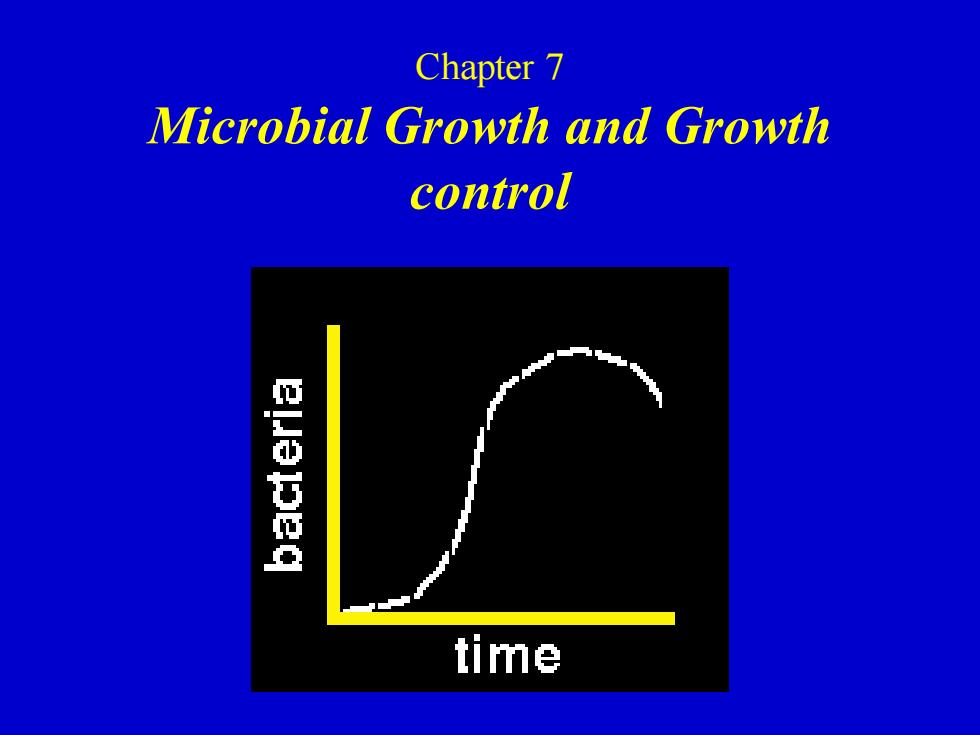
Chapter 7 Microbial Growth and Growth control elepeq time
Chapter 7 Microbial Growth and Growth control
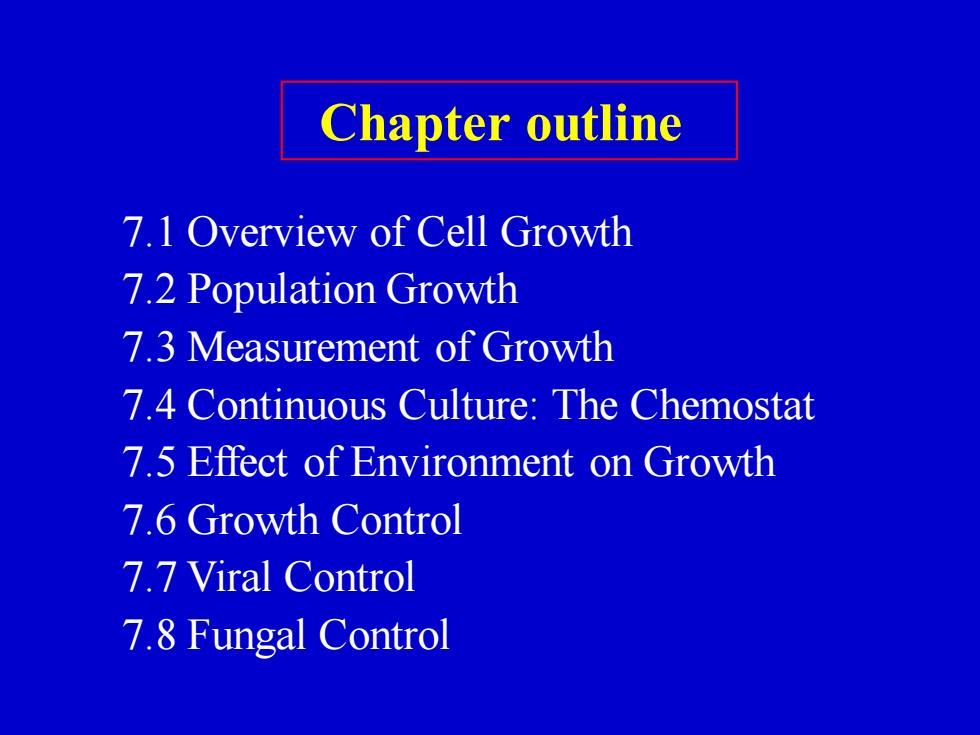
Chapter outline 7.1 Overview of Cell Growth 7.2 Population Growth 7.3 Measurement of Growth 7.4 Continuous Culture:The Chemostat 7.5 Effect of Environment on Growth 7.6 Growth Control 7.7 Viral Control 7.8 Fungal Control
7.1 Overview of Cell Growth 7.2 Population Growth 7.3 Measurement of Growth 7.4 Continuous Culture: The Chemostat 7.5 Effect of Environment on Growth 7.6 Growth Control 7.7 Viral Control 7.8 Fungal Control Chapter outline
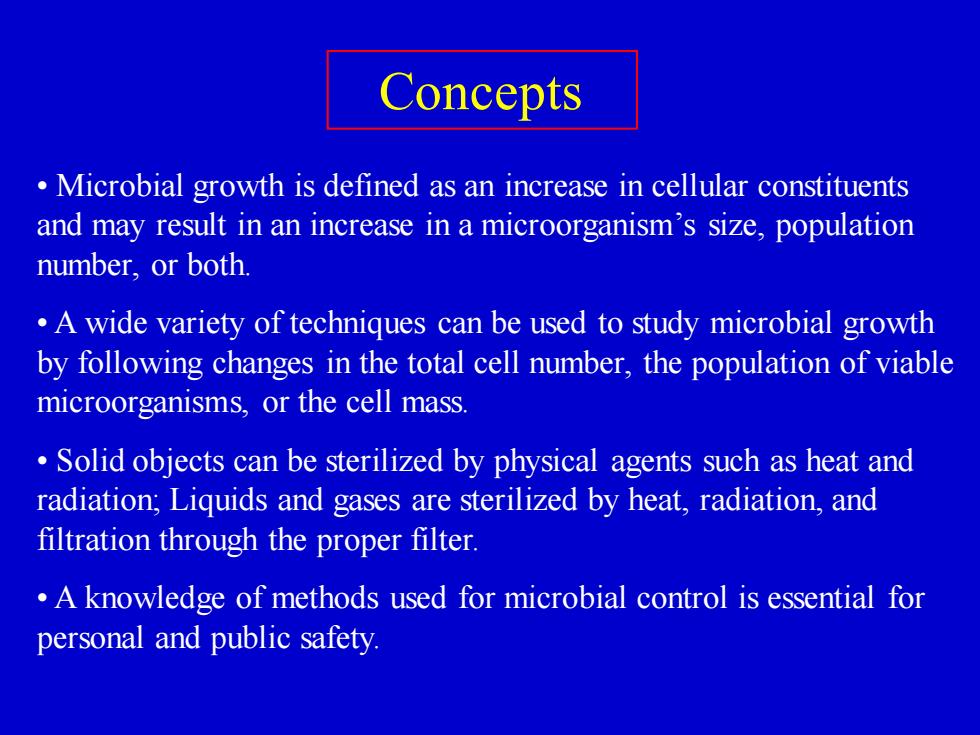
Concepts Microbial growth is defined as an increase in cellular constituents and may result in an increase in a microorganism's size,population number,or both. A wide variety of techniques can be used to study microbial growth by following changes in the total cell number,the population of viable microorganisms,or the cell mass. Solid objects can be sterilized by physical agents such as heat and radiation;Liquids and gases are sterilized by heat,radiation,and filtration through the proper filter. A knowledge of methods used for microbial control is essential for personal and public safety
Concepts • Microbial growth is defined as an increase in cellular constituents and may result in an increase in a microorganism’s size, population number, or both. • A wide variety of techniques can be used to study microbial growth by following changes in the total cell number, the population of viable microorganisms, or the cell mass. • Solid objects can be sterilized by physical agents such as heat and radiation; Liquids and gases are sterilized by heat, radiation, and filtration through the proper filter. • A knowledge of methods used for microbial control is essential for personal and public safety
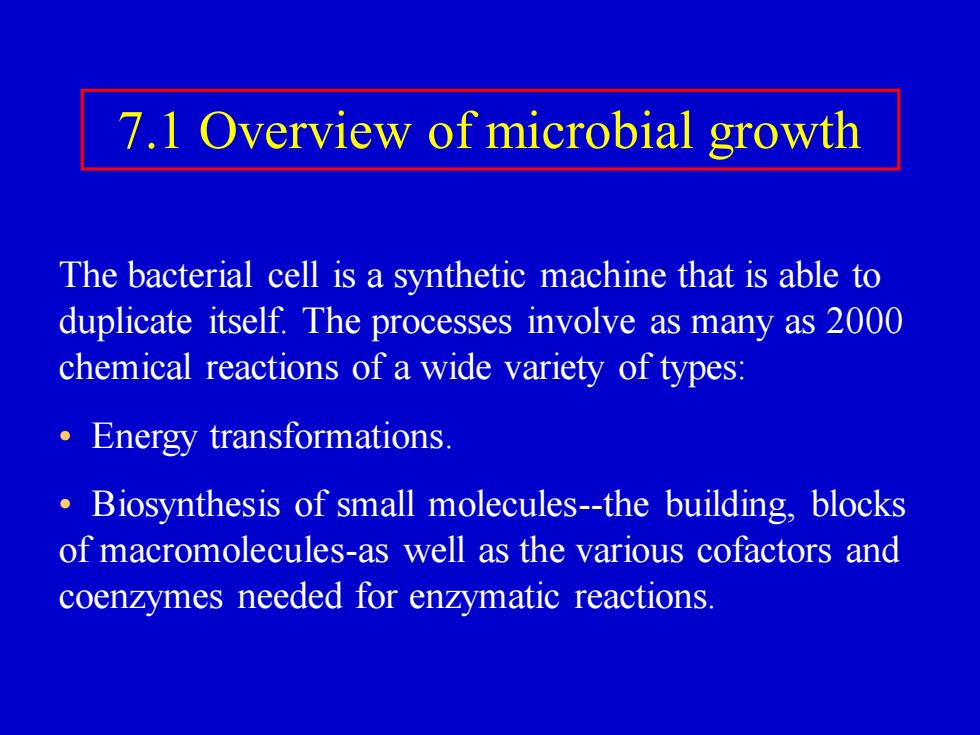
7.1 Overview of microbial growth The bacterial cell is a synthetic machine that is able to duplicate itself.The processes involve as many as 2000 chemical reactions of a wide variety of types: Energy transformations. Biosynthesis of small molecules-the building,blocks of macromolecules-as well as the various cofactors and coenzymes needed for enzymatic reactions
7.1 Overview of microbial growth The bacterial cell is a synthetic machine that is able to duplicate itself. The processes involve as many as 2000 chemical reactions of a wide variety of types: • Energy transformations. • Biosynthesis of small molecules-the building, blocks of macromolecules-as well as the various cofactors and coenzymes needed for enzymatic reactions
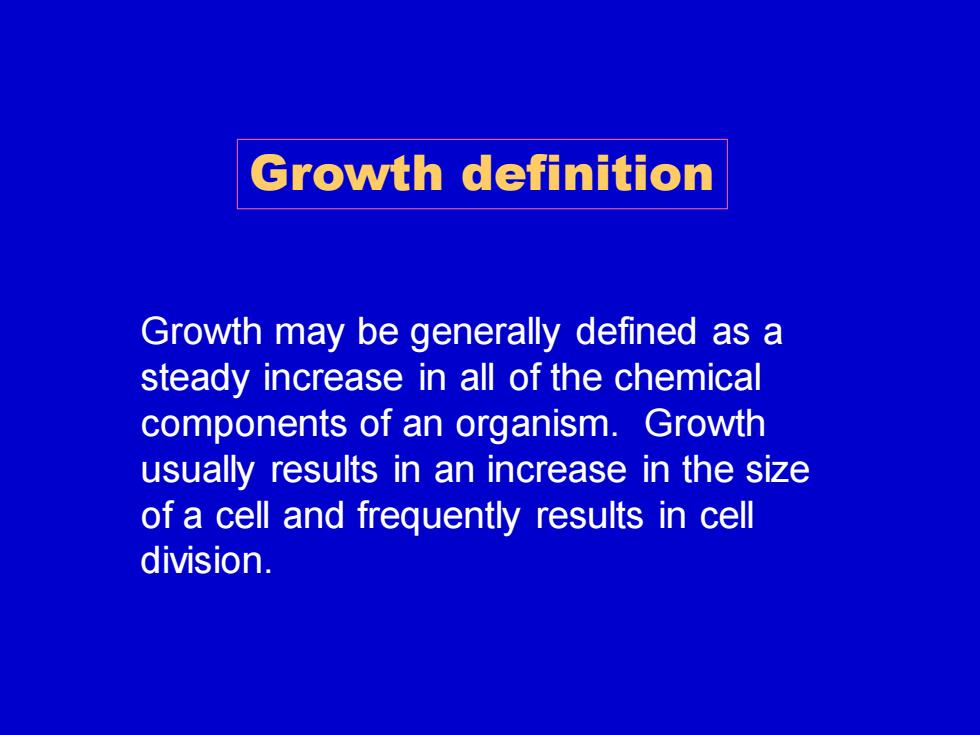
Growth definition Growth may be generally defined as a steady increase in all of the chemical components of an organism.Growth usually results in an increase in the size of a cell and frequently results in cell division
Growth may be generally defined as a steady increase in all of the chemical components of an organism. Growth usually results in an increase in the size of a cell and frequently results in cell division. Growth definition
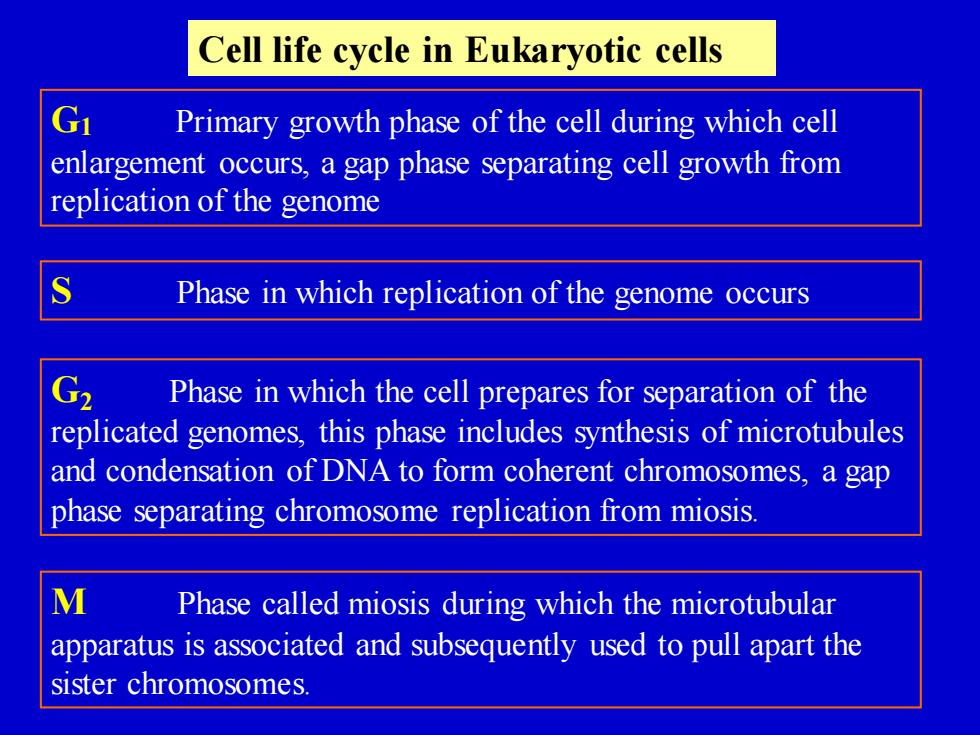
Cell life cycle in Eukaryotic cells Primary growth phase of the cell during which cell enlargement occurs,a gap phase separating cell growth from replication of the genome Phase in which replication of the genome occurs G2 Phase in which the cell prepares for separation of the replicated genomes,this phase includes synthesis of microtubules and condensation of DNA to form coherent chromosomes,a gap phase separating chromosome replication from miosis. M Phase called miosis during which the microtubular apparatus is associated and subsequently used to pull apart the sister chromosomes
G1 Primary growth phase of the cell during which cell enlargement occurs, a gap phase separating cell growth from replication of the genome S Phase in which replication of the genome occurs G2 Phase in which the cell prepares for separation of the replicated genomes, this phase includes synthesis of microtubules and condensation of DNA to form coherent chromosomes, a gap phase separating chromosome replication from miosis. M Phase called miosis during which the microtubular apparatus is associated and subsequently used to pull apart the sister chromosomes. Cell life cycle in Eukaryotic cells
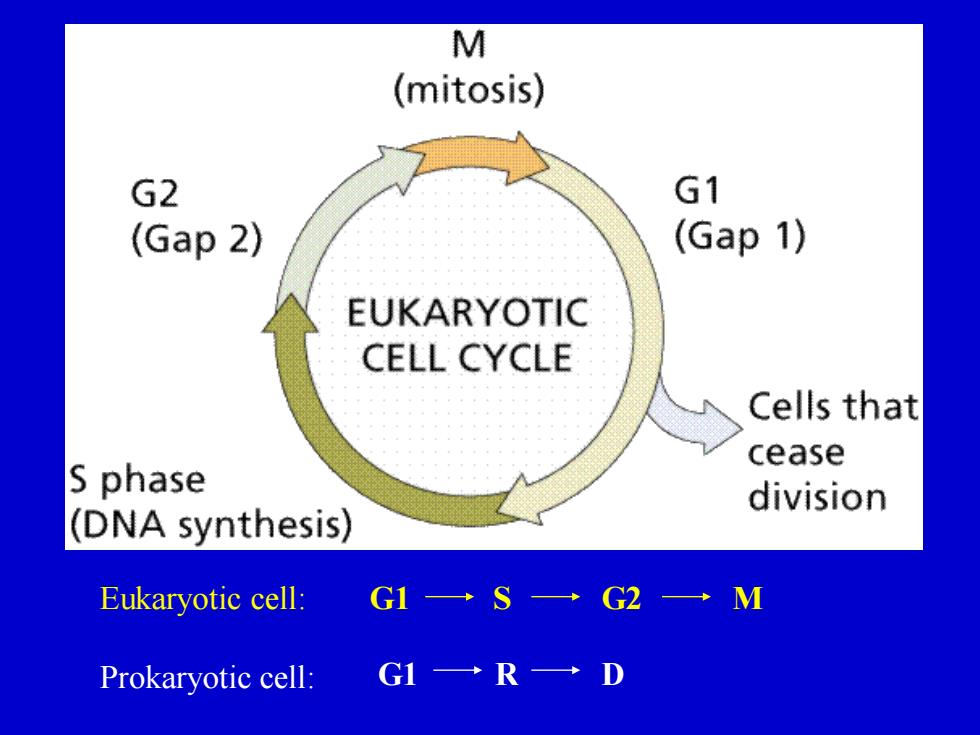
M (mitosis) G2 G1 (Gap 2) (Gap 1) EUKARYOTIC CELL CYCLE Cells that cease s phase division (DNA synthesis) Eukaryotic cell: G1→S→G2→M Prokaryotic cell: G1→R→D
Eukaryotic cell: Prokaryotic cell: G1 S G2 M G1 R D

Binary fision Most bacterial cells reproduce asexually by binary fision,a process in which a cell divides to produce two nearly equal-sized progeny cells. Three processes: Increase in cell size (cell elongation) 。DNA replication 。Cell division
Most bacterial cells reproduce asexually by binary fision, a process in which a cell divides to produce two nearly equal-sized progeny cells. Three processes: • Increase in cell size (cell elongation) • DNA replication • Cell division Binary fision

The general process of binary fission in a rod-shaped prokaryote DNA DNA replication Cell elongation Septum formation Completion of septum with formation of distinct walls Cell separation
T125.gif
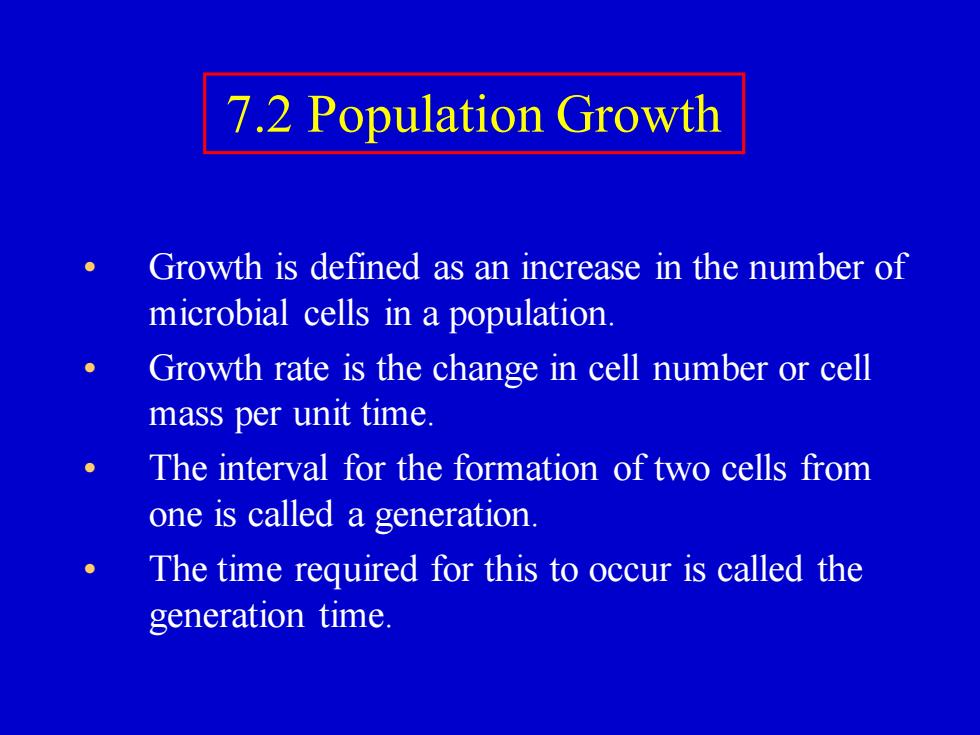
7.2 Population Growth Growth is defined as an increase in the number of microbial cells in a population. Growth rate is the change in cell number or cell mass per unit time. The interval for the formation of two cells from one is called a generation. The time required for this to occur is called the generation time
7.2 Population Growth • Growth is defined as an increase in the number of microbial cells in a population. • Growth rate is the change in cell number or cell mass per unit time. • The interval for the formation of two cells from one is called a generation. • The time required for this to occur is called the generation time